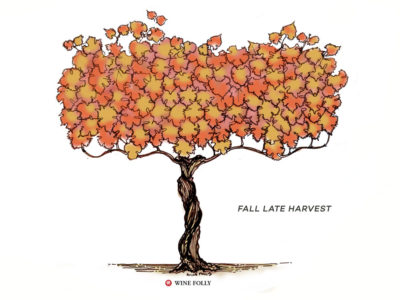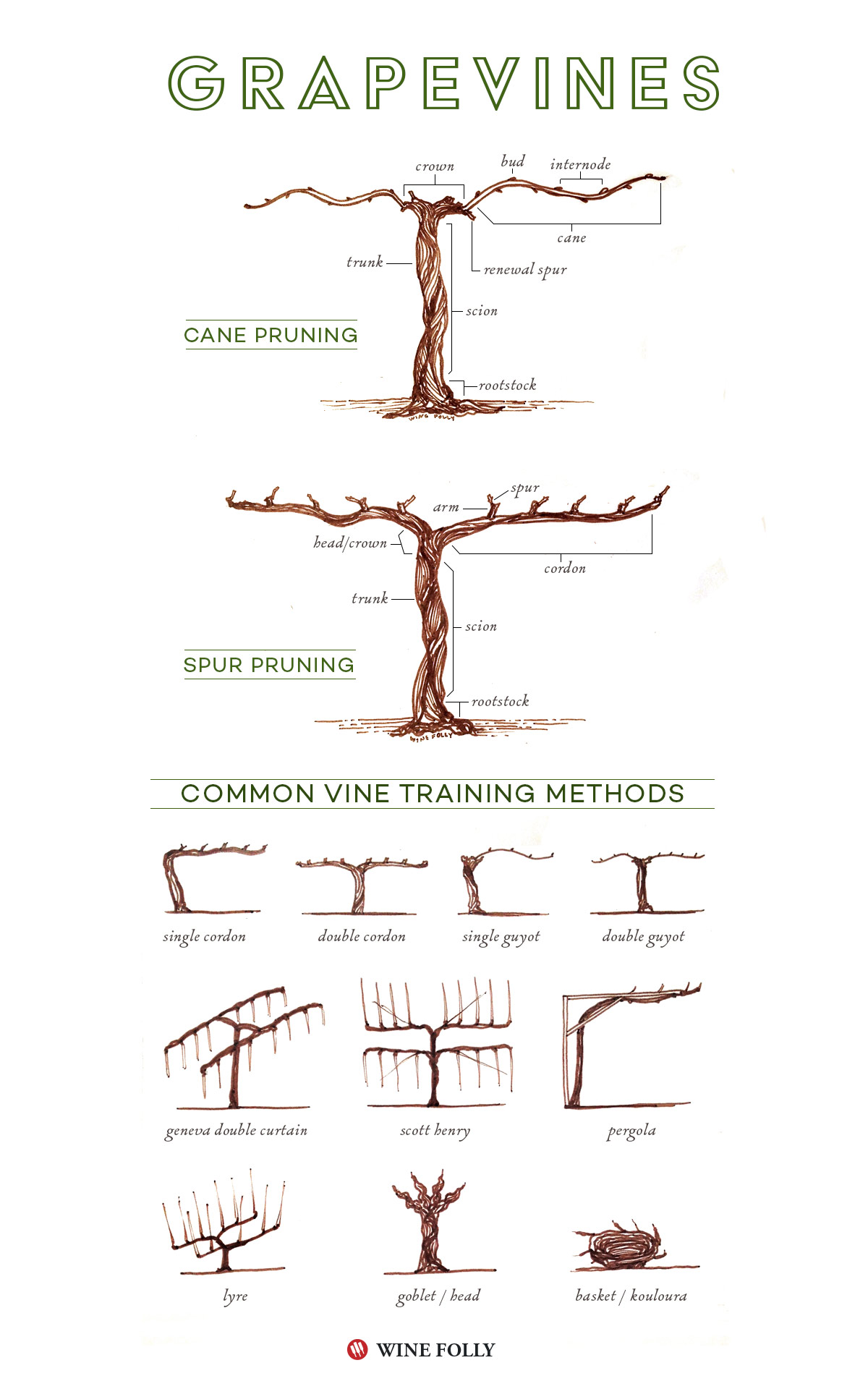If you’ve ever driven through a landscape covered with vineyards, you probably noticed that not all vineyards look the same. That’s because not all grape vines are grown in the same way, given that each vine training system offers different benefits. Let’s go over the basics and discuss several common vine training systems that you’re likely to see on your next journey through wine country.
Spur Pruning vs Cane Pruning
Cane pruning (Guyot) is commonly used in cooler climate growing regions, including Burgundy, Sonoma, and Oregon. By limiting the vine’s lignified growth (the hard brown part) to just the trunk, the vine is less vulnerable to frost and better protected than spur pruned vines. Cane pruning takes great skill to do well because it requires manually cutting back nearly all the vine’s prior growth and correctly selecting a single cane (or two) that will be responsible for next season’s production.
Cane pruning has been adopted by many of the world’s most prestigious wine growing areas.
Spur pruning (Cordon) is common to see in warmer climate growing regions, including California, Washington, and Spain. There are many different styles of Spur-pruned training methods used for everything from table grapes (high production) to fine wine (low production). Spurs (the stub of a cane that contains 1-3 buds) are generally easier to prune and certain training systems, such as goblet method, are ideal for areas prone to drought.
Spur pruning is a more traditional training method that is known to produce outstanding old vine wines.
What to Observe in Different Training Methods
All established wine growing regions tend to adopt a specific training method based on the idiosyncrasies of their climate and terroir. So, while some experts may tell you that the Guyot training method is better than the Pergola method, it really depends on the grape variety and region. Here are some interesting things to observe the next time you see a vineyard:
High Vines: Tall vine trunks lift the grapes higher above the ground to increase airflow and increase sun exposure, which reduces the probability of fungal infections. This training method is more common in cooler climates with high moisture.
Low Vines: Short vine trunks reduce a vine’s exposure to the sun and moderate temperature variation. This is more common in hotter growing regions.
Widely Spaced Vines: In very dry regions, spacing vines farther apart increases their ability to access nutrients from the soil. In moist or irrigated areas, it also increases the vines production (which simultaneously reduces quality).
Closely Spaced Vines: Closely spacing vines is a way to limit each vine’s vigor, limiting production and improving quality.

Up Next: How grapevines grow
Each wine vintage takes an entire year to grow the grapes. This illustrated article describes each step of the grape growing process throughout a single vintage.


